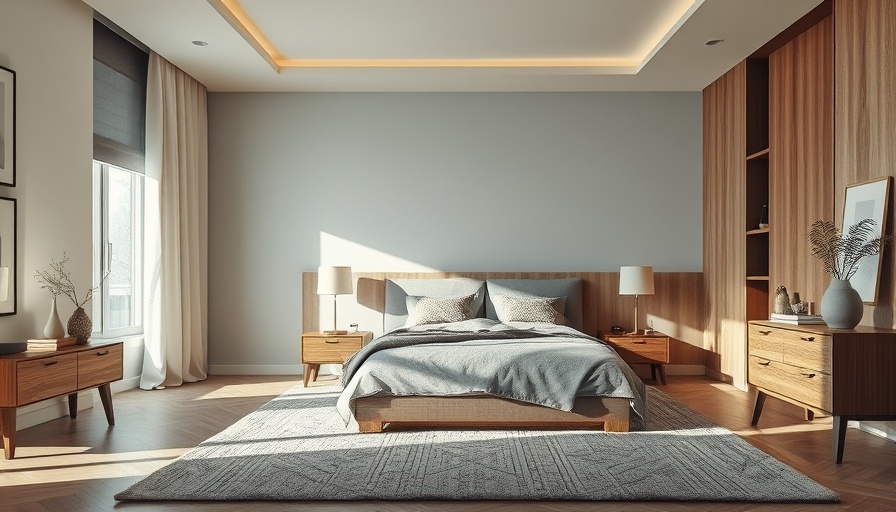
Transform Your Spaces with Layered Lighting
Lighting is a crucial element in any interior design, affecting not just aesthetics but also mood and functionality. For real estate professionals, mastering the layered lighting technique can significantly enhance the appeal of homes for sale, creating inviting atmospheres that potential buyers can envision themselves in. By integrating a mix of ambient, task, and accent lighting, you can elevate a space from simply functional to beautifully designed.
Understanding Layered Lighting
The concept of layered lighting revolves around the combination of three fundamental types of lighting:
- General Lighting: This serves to illuminate the entire room, usually through ceiling fixtures or recessed lights. It creates a foundation for the other layers.
- Task Lighting: Essential for specific activities, this includes desk lamps or under-cabinet lights that offer focused illumination where it’s needed most.
- Accent Lighting: Highlighting features such as artwork or architectural elements, accent lighting adds depth and character. This can be achieved with wall sconces or LED strips.
By thoughtfully combining these layers, you can transform various settings—from a cozy living room to a vibrant kitchenette—making them not only functional but also visually appealing.
The Benefits of Layered Lighting
According to interior designer Anayeli Carrillo, using a layered approach goes beyond mere aesthetics. It accommodates our natural circadian rhythms, allowing for balanced light levels that resonate more with our daily lives. Overhead lighting often feels harsh or artificial, while layered lighting fosters a more comfortable environment.
For instance, during the day, an abundance of natural light can be complemented with warm task and accent lights, while evenings can be softened with strategically placed table lamps and ambient fixtures. This adaptability is especially beneficial for real estate agents needing to highlight a property’s best features during showings.
Impact on Real Estate
Layered lighting is not just for aesthetics; it can significantly influence the real estate marketability of a property. Homes that utilize this technique tend to feel more inviting and spacious, making them appealing to potential buyers. Adding layers of light within properties can also boost their value by modernizing a space or enhancing natural light. According to Realtor statistics, a well-lit room can even reduce the time a property sits on the market.
Practical Tips for Implementation
Here are some actionable insights for incorporating layered lighting into a space, whether it's a listing or your own home:
- Invest in Dimmable Lights: These lights enhance versatility, allowing you to adjust the ambiance according to the time of day or occasion.
- Position Task Lighting Wisely: Place task lighting in areas where most functionality is required—think kitchens, home offices, and reading nooks.
- Choose Accents that Reflect Style: The style of accent lighting should resonate with the overall decor of the room. Consider using decorative lamps or LED strips that add personality.
By combining thoughtful design choices, real estate agents can maximize the aesthetic and practical benefits of layered lighting, making a significant difference in how a property is perceived.
Potential Challenges to Consider
While layered lighting offers myriad benefits, it's important to consider the challenges. Misplaced lighting can create unwanted shadows or harsh contrasts, which could detract from the appeal of a room. Additionally, not all rooms will benefit from every type of light—knowing when to integrate or omit certain designs is key.
Moreover, for real estate agents, staying updated on the latest trends in lighting can give you an edge in your market. As buyers increasingly seek homes with efficient and effective lighting, keeping informed about modern lighting solutions can be an essential aspect of your strategy.
Conclusion: Elevate Your Real Estate Game
In conclusion, layered lighting is a powerful design tool that can redefine spaces, making them appealing to potential buyers in the competitive real estate landscape. If you're serious about selling a property or enhancing your own home, consider the layered approach not just as a style choice but as an investment in the space’s atmosphere.
Ready to dive deeper into interior design possibilities? Explore our additional resources on real estate trends, home staging tips, and how to set your listings apart in today’s market.
 Add Row
Add Row  Add
Add 




Write A Comment